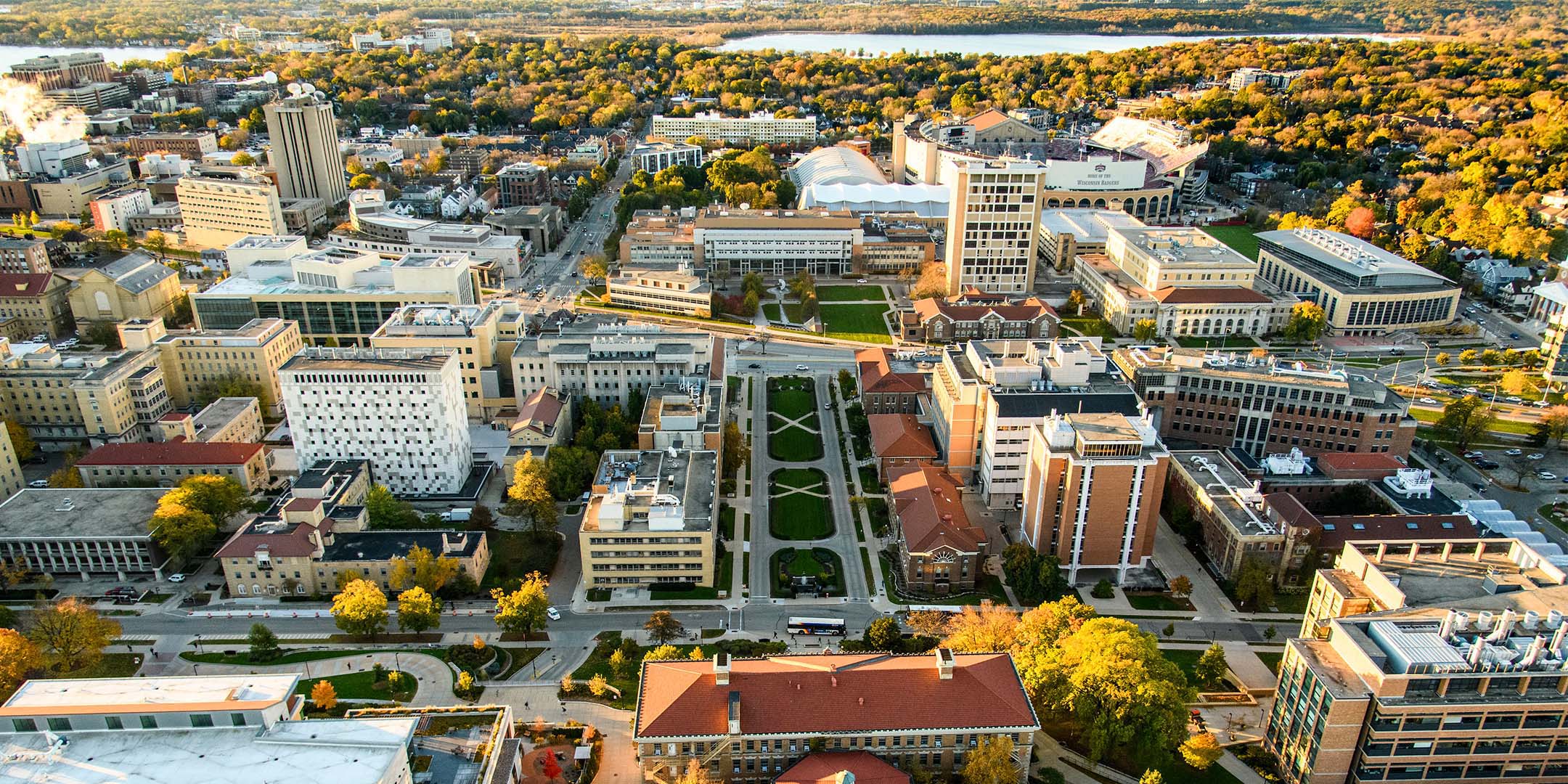
A trifecta of major building efforts is on the horizon for UW–Madison. Maintaining a steady focus on offering state-of-the-art facilities, increasing capacity to educate more students, and modernizing spaces to remain competitive, the university is raising funds to support the future expansion of the College of Engineering, the School of Computer, Data & Information Sciences, and the College of Letters & Science.
With design and infrastructure work already underway, the growth initiative for the College of Engineering will provide the space needed to enroll 1,000 more undergraduates, recruit and retain first-rate faculty members, and sustain the excellence in research and graduate education for which the college is known. More and more students apply each year, but due to space constraints, the college is only able to enroll just under 20 percent of those exceptional students. Due to an increasing demand for engineering graduates, a state-of-the-art building is a top priority to keep up with industry advances and provide an outstanding education.
“When I talk to the recruiting companies, all of them say, ‘We can go anywhere and get good engineers, but we come to UW–Madison to get great engineers because we know they’re well educated, they know how to work in teams, and they know how to break down a problem and solve it.’ Now we will have facilities that encourage learning, collaboration, and innovation,” says Ian Robertson, the college’s dean.
The goal is to replace an aging 64,000-square-foot building on the engineering campus with a 340,000-square-foot facility worthy of the university. “We’re looking to create a vibrant, multifunctional, signature engineering building,” Robertson says. “It will stimulate collaborations, spark discoveries, and allow us to attract and retain the engineering talent we need to solve the challenges we’re facing in society.”
Campus leaders are taking a similar approach to creating the new home for the School of Computer, Data & Information Sciences (CDIS), which comprises the Departments of Computer Sciences and Statistics, and the Information School. As technology transforms every aspect of our lives, creating a space that bring together computing, data, and society is vital for growth. Enrollment in CDIS majors outpaces all others on campus, which demands more space to support creative partnerships, foster industry relationships, and drive innovation.
“There is no place on campus — or in modern society — where computing isn’t relevant,” says Tom Erickson, CDIS founding director. “It’s why we are focused on investing in a space that connects campus around the disciplines of computer, data, and information sciences. The information age has already transformed the way we live, but we are only at the beginning with even more dramatic changes ahead,” Erickson adds. “A facility dedicated to fostering collaboration and innovation in high tech is critical for our campus to maintain its breadth of excellence.”
Entirely funded through donor support, CDIS is constructing a center where Badgers from any major can work collaboratively while gaining valuable skills and insight. A $125 million commitment from visionary alumni Tashia ’55 and John ’55 Morgridge, which includes a $50 million match, along with $50 million from the Wisconsin Alumni Research Foundation, is helping to launch this effort, which will complete a 328,000-square-foot hub in the center of campus to foster academic research, host partnerships with community and industry cohorts, and support growing student interest.
Designed to be the most sustainable building on campus, the new facility will be dedicated to digital excellence, establishing a tech corridor from physics and chemistry to the College of Engineering. It will house not only the departments of CDIS but also the Center for High Throughput Computing, the N+1 Institute, the American Family Data Science Institute, and much of the Department of Biostatics and Medical Informatics. The colocation of these innovative programs will increase innovation and accelerate discovery.
“This is an investment in UW–Madison and the state of Wisconsin that will help secure their place in our shared future,” shares John Morgridge. “Tashia and I hope our commitment will inspire others to see the transformative potential of this project and help get it over the finish line.”
Also shaping the future in the College of Letters & Science — the largest of UW–Madison’s 13 schools and colleges — is a planned four-story facility to better serve the needs of a rapidly growing undergraduate population. The new space, named Irving and Dorothy Levy Hall in honor of a generous $20 million lead gift from Jeff Levy ’72 and Marv Levy ’68, JD’71, will be located on the southwest corner of Park Street and W. Johnson Street. The building will support enrollment growth and upgrade the student learning experience for all undergraduates who take L&S courses, as well as generate research connections on campus.
Levy Hall is part of a larger plan to replace the aging Mosse Humanities Building, which can no longer effectively support campus needs. This new facility will bring together formerly disseminated departments in the humanities and ethnic studies, maximizing collaborative efforts, research opportunities, and teaching support. Additionally, it will offer modern, active-learning classrooms to serve a growing student population.
With the Levy’s generosity, additional funds to be raised from alumni and friends of the university, and a $60 million state investment, this academic building will create an integrated home for the Department of History and seven other L&S departments and programs. Construction is set to begin in 2024 with an expected completion in 2026.
“We are proud to help make this building a reality,” says Marv. “Our hope is that by honoring our family legacy of charitable giving with this gift, we can offer to future generations some of the opportunity that the UW had provided us.”
